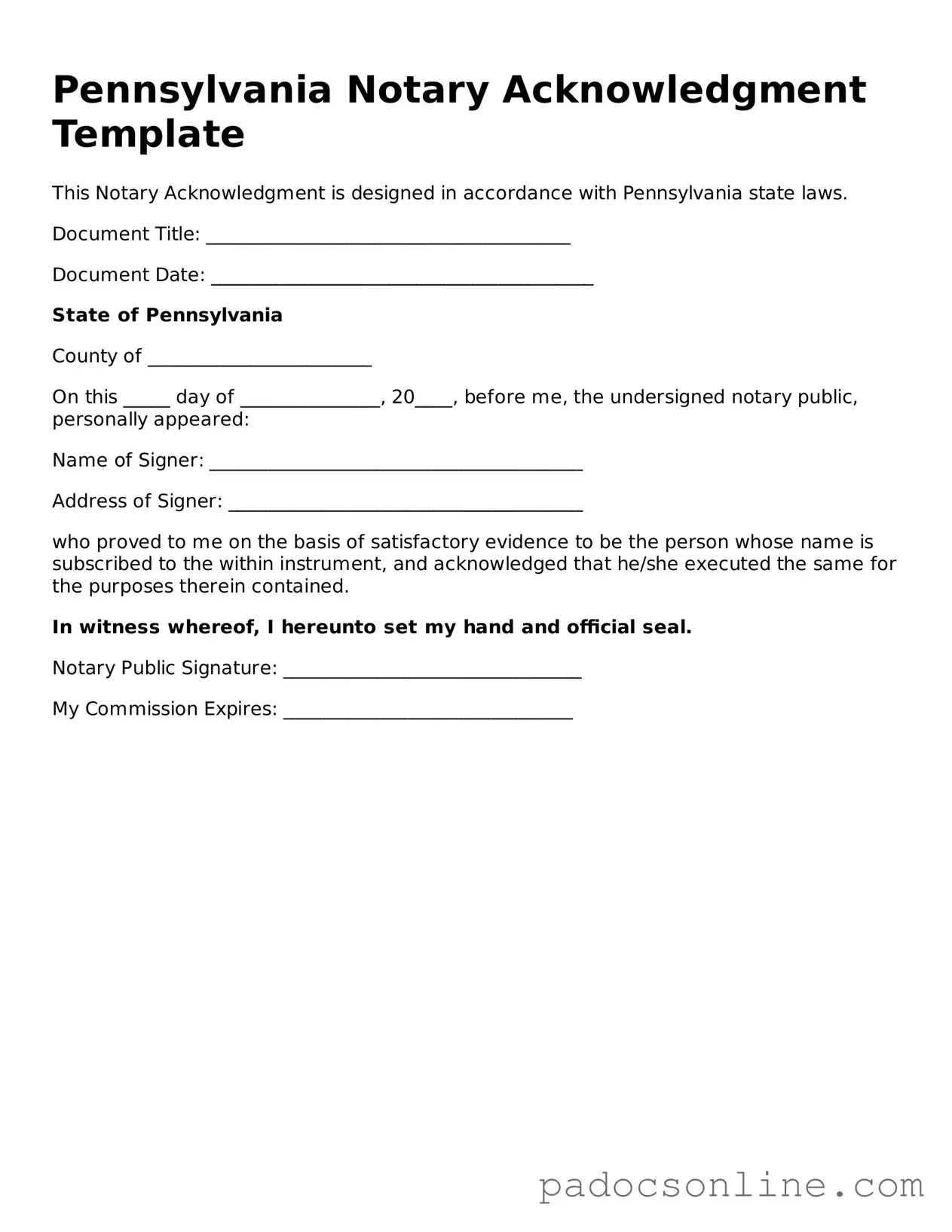When filling out the Pennsylvania Notary Acknowledgement form, individuals often make several common mistakes that can lead to complications. One frequent error is failing to include the correct date of the acknowledgment. The date is essential for establishing when the document was notarized, and omitting it can render the acknowledgment invalid.
Another mistake involves not properly identifying the signer. The form requires the notary to confirm the identity of the individual signing the document. If the notary does not include the full name of the signer as it appears on their identification, this can create issues regarding the authenticity of the acknowledgment.
Inaccurate or incomplete information about the notary can also be problematic. The notary must provide their full name, title, and commission expiration date. If any of this information is missing or incorrect, it may raise questions about the legitimacy of the notarization.
Additionally, some individuals neglect to ensure that the signer is present at the time of notarization. The notary must witness the signing of the document. If the signer is not present, the acknowledgment is invalid, regardless of how well the form is filled out.
Another common oversight is the failure to sign the form properly. The notary must sign the acknowledgment in the designated area. If the signature is missing or placed incorrectly, the form may not be accepted by authorities or institutions requiring it.
People also sometimes forget to include the notary seal. In Pennsylvania, a notary must affix their official seal to the acknowledgment form. Without this seal, the document may not carry the weight of a legally recognized notarization.
Finally, many individuals overlook the importance of reviewing the completed form for accuracy. A simple review can catch errors before submission. Taking the time to double-check all entries can prevent delays and issues related to the notarization process.
